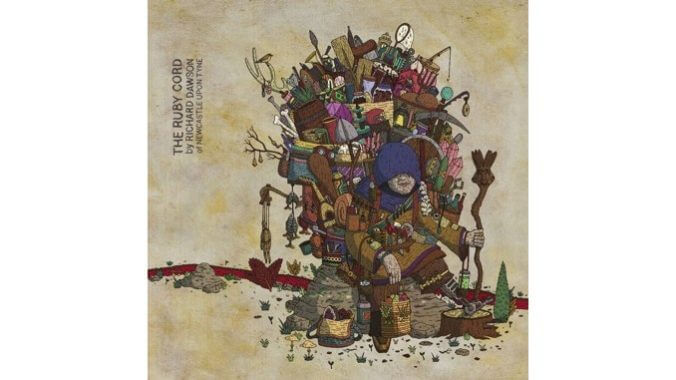Richard Dawson Threads Patience and Empathy on The Ruby Cord
The Newcastle Upon Tyne avant-folk songwriter delivers his most ambitious compositions to date in this conclusion to a trilogy of time-specific concept albums

In the earliest months of 2020, Richard Dawson and his partner Sally Pilkington started a new project called Bulbils, a means of reconfiguring how the two approached music and offered it to fans. Shirking the refinement and long production cycles of traditional release models, the duo set about with a simple aim: record whatever was on their minds any given day and upload it as it was, without further tweaking. The result was something akin to a communal salve—mental relief from nascent pandemic worries performers and listeners might have been facing in their own lives—oft-delivered via meditative ambient textures of guitars, vocals, synths, and anything else Dawson and Pilkington might have felt the urge to use in the moment.
Bulbils arrived shortly after Dawson’s prophetically titled 2020, his last solo studio album, and its immediate effect on his follow-up is palpable. The Ruby Cord marks both a culmination of and departure from the avant-folk style Dawson broke out with on 2017’s Peasant. Dawson’s compositions have always relished in eccentricities and sheltering hidden nooks just beneath the surface, be it in “Ogre” withholding its refrain until its climax or the hairpin turn into an Iron Maiden-esque riff on Circle collab track “Methuselah.” But The Ruby Cord sees the songwriter reaching for a profound patience heretofore unseen in his work, pairing a thoughtful variation on the unfurling ambient work of Bulbils with the empathetic storytelling of Peasant and 2020.
The shift is starkly apparent on The Ruby Cord’s very first song, “The Hermit.” At a whopping 41 minutes, it’s Dawson’s longest track to date—an entire album in miniature. Over 11 minutes pass without any words, filled with variations on the same shambling guitar lick, gentle brushes of percussion, withdrawn piano and harp, and stray wisps of strings. When Dawson’s voice finally comes in, it’s as if the track itself is in the midst of adjusting (his first lyrics: “I’m awake but I can’t yet see”), before nestling into the instrumental’s unhurried pace and long, winding narrative. At points, the instruments disappear completely, leaving Dawson’s words ringing out alone, impossible to ignore. It’s a striking introduction to The Ruby Cord, and one that indelibly sets the tone for the rest of the record.
-

-

-

-

-

-

-

-

-

-

-

-

-

-

-

-

-

-

-

-

-

-

-

-

-

-

-

-

-

-

-

-

-

-

-

-

-

-

-

-








































